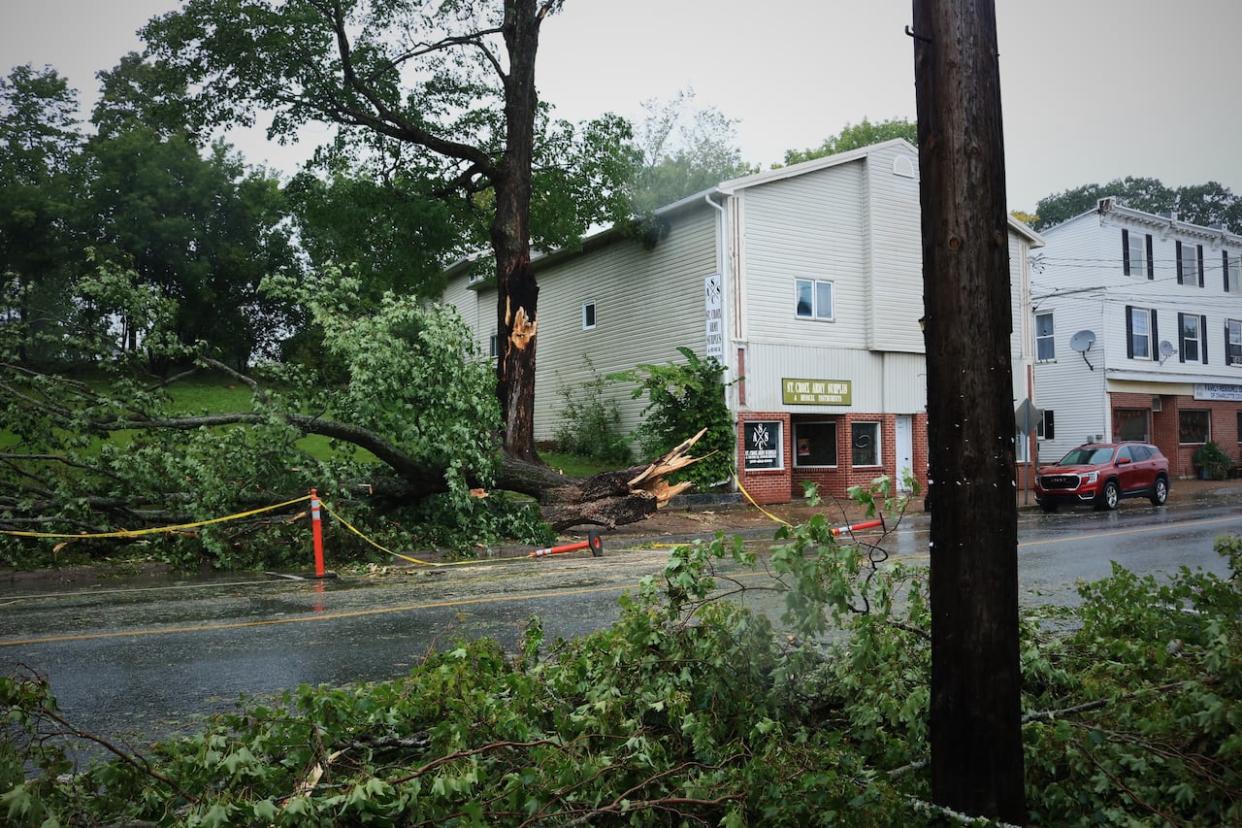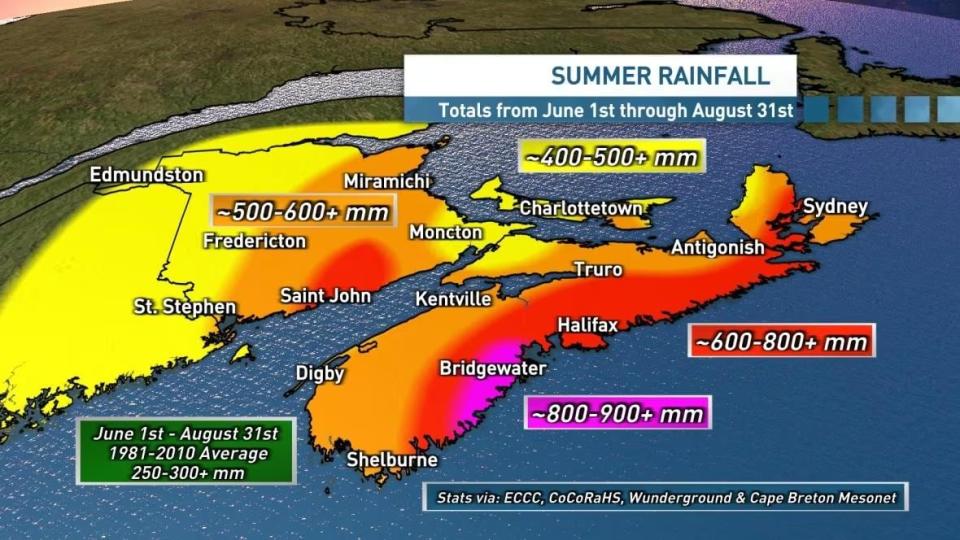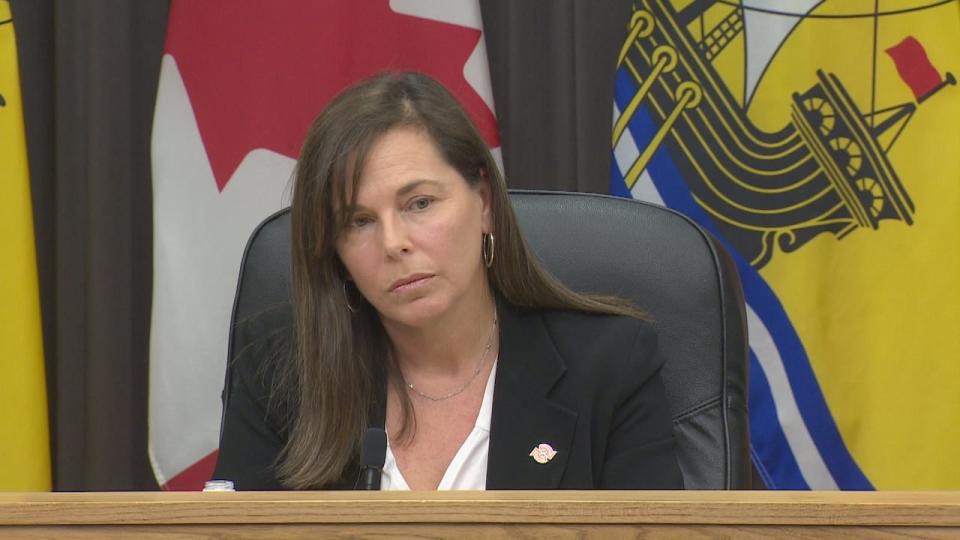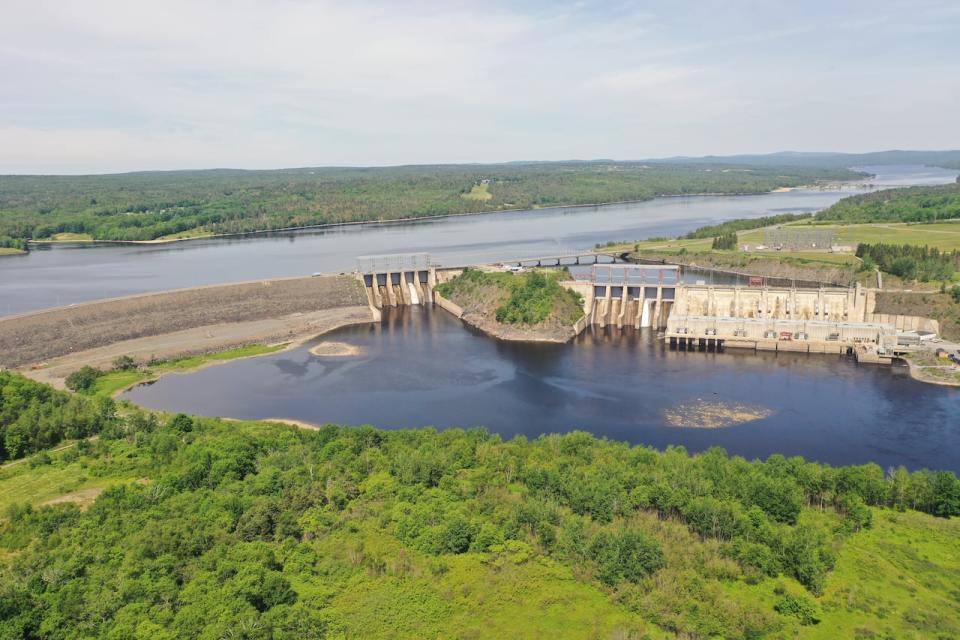Year of major storms drives financial results at N.B. Power down — and up

Outages and repairs related to ugly weather during the fall and winter have cost N.B. Power near-record amounts, but it's a bill that equally miserable weather from last spring and summer may help pay for.
In evidence filed with the New Brunswick Energy and Utilities Board earlier this month, N.B. Power revealed restoration costs from storm damage for the current year are $30.9 million so far.
That is led by an estimated $19.3 million caused by a windstorm that knocked out power to more than 120,000 customers, some for more than a week, just before Christmas.
"The costs associated with the storm were significant," the utility said about the December outages in response to a number of written questions about weather issues from public intervenor Alain Chiasson.

A CBC weather chart showing rainfall in New Brunswick was double normal amounts for June, July and August. (Ryan Snoddon/CBC)
Written questions and answers are part of the evidence gathering process leading up to N.B. Power's upcoming rate increase hearing in May.
In addition to that December storm, the bill for repairs caused by a number of other storms — including post-tropical storm Lee in September — now exceeds that of the four previous years combined and ranks the current year as the second costliest for storm damage of all time.
Only 2017, which included a series of punishing ice storm outages in northeastern New Brunswick, was worse for the utility.
However, N.B. Power warns storm damage bills are still coming in — and there is still a month to go before the end of its current fiscal year.

N.B. Power vice-president of operations Nicole Poirier told reporters after a December storm knocked out power to more than 120,000 customers that weather events caused by climate change are having a growing effect on utility operations. (Government of New Brunswick livestream)
"Further storm events experienced up until March 31st would impact actual storm costs," the utility wrote.
But bad weather hasn't been all bad news for the utility.
According to CBC meteorologist Ryan Snoddon, last summer was one of the wettest on record in New Brunswick — and for a utility with six river dams, that can only be good news.
"June, July and August were a washout," Snoddon wrote in September. "Many in the region saw more than double the average rainfall in those three months."

Water levels in New Brunswick rivers were high all summer due to heavy rain. That allowed N.B. Power dams, including the Mactaquac dam, to double their normal production of electricity. (Shane Fowler/CBC News)
Snoddon said it wasn't just many days of rain "but many days of heavy rain" over 13 weeks from June through August. Additional heavy rains then pounded New Brunswick again in September with the arrival of Lee.
That played havoc with everything from vacations to ice cream sales but it also flooded New Brunswick rivers with water that had NB Power's fleet of river dams producing double their normal amount of electricity.
According to the utility's financial reports, it produced 400 million kilowatt hours of hydroelectricity more than normal in July, August and September — enough to pay for damages caused by the bad weather events that soon followed.

Rain affected hundreds of events in New Brunswick during the summer, including this 24-hour trail running event in Saint John in August that went ahead despite mud and puddles all over the route. (Robert Jones/CBC)
In its rate application, NB Power cites climate change as the cause of storms and weather patterns that have both hurt and helped the utility and its customers.
"The impacts of climate change are being increasingly felt by New Brunswickers as a result of more frequent and intense weather," the utility wrote.


